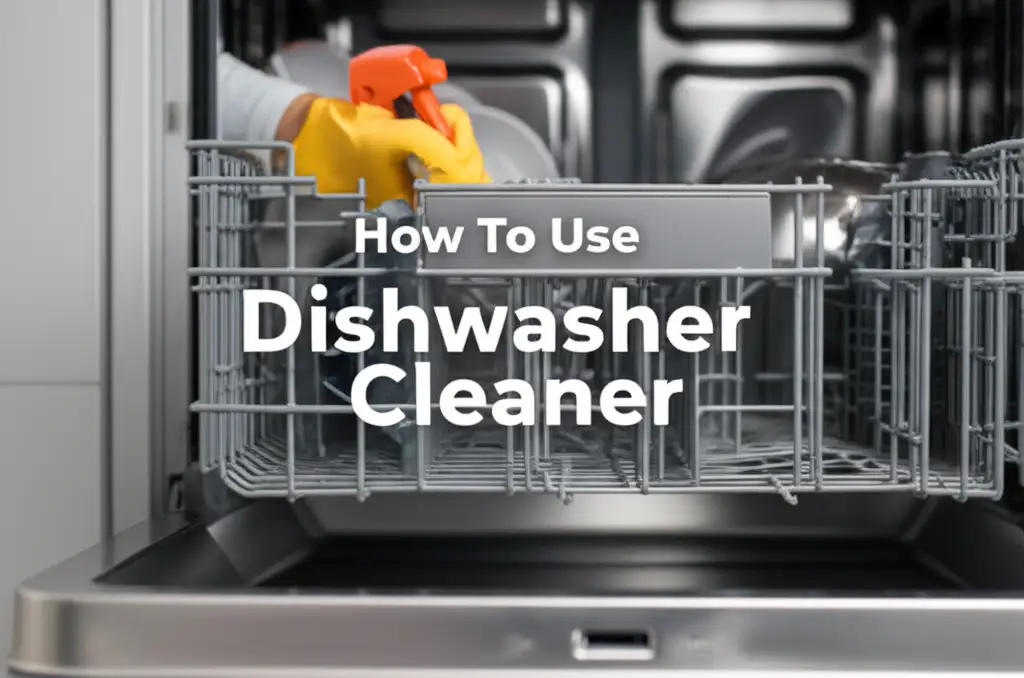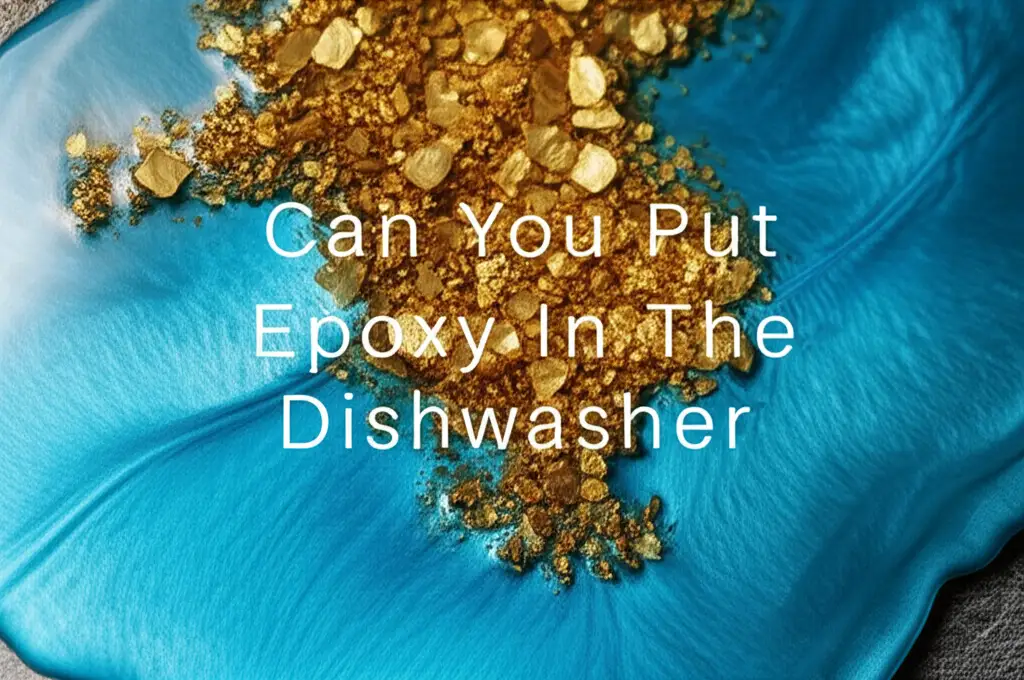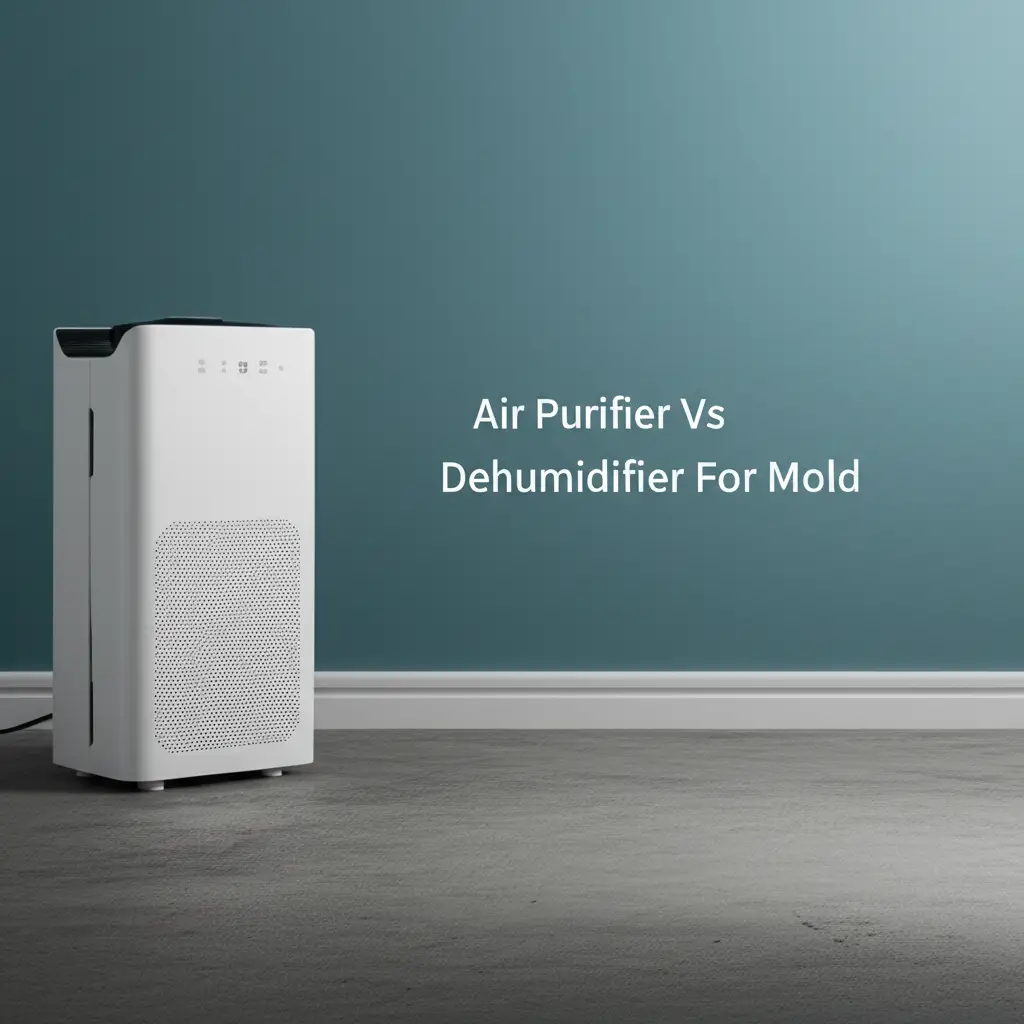· Tessa Winslow · Home Maintenance · 17 min read
How To Use Dishwasher Cleaner

Unlock a Spotless Shine: How to Use Dishwasher Cleaner Effectively
Are your dishes coming out cloudy or still having food bits stuck to them? Does your dishwasher smell less than fresh? These are clear signs your appliance needs a good cleaning. Learning how to use dishwasher cleaner correctly makes a big difference. It ensures your dishes get truly clean and your appliance runs well.
I know the frustration of opening a dishwasher expecting clean dishes, only to find a lingering odor or residue. A dirty dishwasher cannot clean itself. It needs your help to wash away grease, food particles, and hard water deposits. This guide helps you understand exactly how to clean your dishwasher with ease. We will explore different types of cleaners and show you step-by-step instructions.
Takeaway
- Choose the Right Cleaner: Select between commercial cleaners or natural options like vinegar and baking soda.
- Prepare Your Dishwasher: Always ensure your dishwasher is empty before cleaning.
- Follow Instructions: Use the chosen cleaner according to its specific directions for best results.
- Regular Maintenance: Clean your dishwasher monthly to prevent buildup and odors.
- Clean Filters Manually: Remove and wash the dishwasher filter regularly for optimal performance.
To use dishwasher cleaner, empty your appliance first. Place a commercial cleaner bottle upside down in the bottom rack or add a natural solution like vinegar to a cup. Run an empty hot water cycle, usually “heavy duty” or “pots and pans.” This process removes food debris, grease, and mineral deposits, ensuring clean dishes and a fresh-smelling machine.
Why Your Dishwasher Needs Regular Cleaning
Your dishwasher works hard every day to clean dishes. Over time, food bits, grease, and soap scum build up inside it. Hard water leaves mineral deposits on internal parts. This accumulation stops your dishwasher from doing its job well. It also creates bad odors.
A dirty dishwasher means dirty dishes. You might see cloudy glasses or food particles left behind. This is a common sign your appliance needs attention. Regular cleaning keeps your dishwasher working efficiently. It helps extend its lifespan too.
Think of it like showering yourself. You get clean, but the shower needs cleaning sometimes too. Your dishwasher is the same. It cleans your plates and cups, but dirt and grime can stick to its insides. A thorough cleaning removes these residues.
This maintenance prevents breakdowns. It also keeps your energy bills lower. A clean dishwasher does not have to work as hard. This means it uses less electricity. Knowing how to use dishwasher cleaner effectively saves you money and hassle in the long run.
Choosing the Right Dishwasher Cleaner for Your Home
Many different types of dishwasher cleaners exist. You can choose between commercial products or natural home remedies. Each type has its own benefits and usage instructions. Understanding them helps you pick the best one.
Commercial dishwasher cleaners often come in tablet, liquid, or powder form. Brands like Finish, Affresh, and Glisten are popular choices. These products contain strong cleaning agents. They effectively break down grease, food residue, and hard water stains. Many commercial cleaners also deodorize your appliance.
Natural cleaning options are also effective. White vinegar and baking soda are common choices. Vinegar is an acid that dissolves mineral deposits and soap scum. Baking soda absorbs odors and provides a gentle abrasive action. These natural options are often preferred by people seeking eco-friendly solutions. They are also budget-friendly.
Some people even use OxiClean in their dishwashers. Can I Use OxiClean in My Dishwasher provides more details on this option. It is important to know if your specific dishwasher can handle it. Always check your appliance manual before using any new cleaning agent. The right cleaner depends on your needs and how dirty your dishwasher is.
Commercial Dishwasher Cleaners
Commercial cleaners are designed for ease of use and strong results. They typically come in pre-measured doses. You usually just place them in your dishwasher and run a cycle. These products often target specific issues. Some focus on hard water stains, others on odors.
Always read the label on commercial cleaners. Different brands have different instructions. Some require an empty dishwasher, others allow you to run them with a normal load of dishes. I find following these instructions makes a big difference. It ensures the cleaner works as intended.
These cleaners contain powerful chemicals. They help sanitize the machine. This is good for killing bacteria and mold. If you have significant buildup or persistent odors, a commercial cleaner can be a quick solution. They are widely available in most stores.
Natural Dishwasher Cleaners
Natural cleaners offer a safe and gentle alternative. White vinegar is a great descaler. It cuts through grease and grime. Baking soda helps remove stubborn odors. These items are readily available in your pantry.
Using vinegar is simple. You place a cup of white vinegar in an upright, top-rack safe bowl. Then, run an empty hot cycle. Baking soda can be sprinkled on the bottom of the dishwasher. You can use it alone or with vinegar.
Many people prefer natural cleaners for health reasons. They are also better for the environment. If you want to know more about natural alternatives for common dishwasher products, you can explore Can I Use Vinegar Instead of Rinse Aid in Dishwasher. This link offers valuable insights into using vinegar for different purposes in your appliance. Natural options are effective for regular maintenance.
Step-by-Step Guide: Using a Commercial Dishwasher Cleaner
Using a commercial dishwasher cleaner is a straightforward process. Following these steps ensures you get the best results. A clean dishwasher means cleaner dishes. I will walk you through the process.
1. Empty Your Dishwasher Completely:
- Before starting, remove all dishes, silverware, and any large food particles.
- Look inside and check for any debris.
- Make sure nothing is blocking the spray arms or filter area.
- An empty machine allows the cleaner to reach all internal surfaces.
2. Locate the Cleaner Dispenser/Placement:
- Most commercial dishwasher cleaners come in bottles, pouches, or tablets.
- For bottles (like Finish or Glisten), you typically place the entire bottle upside down in the bottom rack. The wax seal melts during the cycle, releasing the cleaner.
- For tablets or powders, you might place them directly in the detergent dispenser or sprinkle them on the bottom of the dishwasher tub.
- Always read the specific instructions on your cleaner’s packaging.
3. Choose the Right Cycle:
- Select a hot water cycle. Options like “Heavy Duty,” “Pots and Pans,” or “Sanitize” are usually best.
- These cycles use hotter water and run for a longer duration.
- The hot water helps activate the cleaning agents. It also breaks down grease and grime more effectively.
- Avoid using quick wash cycles for cleaning your dishwasher, as they may not be hot enough or long enough to do a thorough job. For more information about different cycles, read Does Quick Wash Use Less Water Dishwasher.
4. Run the Empty Cycle:
- Start the dishwasher with no dishes inside.
- Let the full cleaning cycle complete.
- The cleaner will circulate, removing buildup from spray arms, filters, and the tub walls.
- You might notice a difference in smell or appearance during or after the cycle.
5. Inspect and Maintain:
- Once the cycle finishes, open the dishwasher door.
- You should notice a fresher smell and cleaner interior.
- Wipe down any remaining moisture or residue from the door gasket.
- Regular monthly cleaning keeps your dishwasher in top condition.
This simple routine ensures your dishwasher stays in good shape. It means your dishes come out sparkling every time. A clean appliance is a happy appliance.
Step-by-Step Guide: Using Natural Cleaners (Vinegar & Baking Soda)
Using natural cleaners like white vinegar and baking soda is an effective way to clean your dishwasher. These common household items are safe and readily available. They work wonders on grime and odors. Let’s get started.
1. Empty Your Dishwasher:
- Just like with commercial cleaners, ensure your dishwasher is completely empty.
- Remove all dishes, utensils, and any large food debris.
- This step is crucial for the cleaners to reach all parts of the machine.
2. The Vinegar Treatment:
- Place a heat-safe bowl or mug with one to two cups of white vinegar on the top rack of your empty dishwasher.
- Do not add any detergent.
- Run a hot water cycle, such as “Heavy Duty” or “Pots and Pans.”
- The vinegar will circulate, dissolving hard water stains, grease, and soap scum.
- It also acts as a natural deodorizer.
3. The Baking Soda Boost:
- After the vinegar cycle finishes, sprinkle about half a cup to one cup of baking soda across the bottom of the dishwasher tub.
- Do not add any other cleaners or dishes.
- Run another short, hot wash cycle (like “Rinse Only” or a quick hot wash).
- Baking soda helps absorb any lingering odors. It also provides a gentle abrasive action to scrub away remaining grime.
4. Post-Cleaning Inspection:
- Once both cycles are complete, open your dishwasher.
- You should notice a significant improvement in freshness and cleanliness.
- Wipe down the door gasket and edges with a damp cloth if needed.
- The combination of vinegar and baking soda leaves your dishwasher sparkling clean and odor-free.
This natural cleaning method is gentle on your appliance. It is also safe for your family and the environment. I use this method regularly myself. It helps maintain a fresh and efficient dishwasher without harsh chemicals.
Pre-Cleaning Prep and Essential Maintenance Tips
Before you even start a cleaning cycle, some manual pre-cleaning is vital. This prepares your dishwasher for a deeper clean. It also addresses areas the cleaning cycle might miss. Proper maintenance ensures your appliance lasts longer and performs better.
1. Scrape Off Food Debris:
- Always scrape off large food particles from plates before loading them. This prevents them from clogging the filter.
- Though dishwashers are designed to handle some residue, excessive food bits cause buildup.
- This simple habit reduces the amount of work your dishwasher has to do.
2. Clean the Dishwasher Filter:
- Your dishwasher has a filter that catches food debris. This filter gets dirty quickly.
- Most filters are located at the bottom of the dishwasher, often under the lower spray arm.
- Twist or unclip the filter to remove it.
- Rinse it under hot running water. Use a small brush (like an old toothbrush) and dish soap to scrub away stubborn grime and grease.
- Rinse thoroughly until all debris is gone.
- Reinsert the filter correctly, ensuring it locks into place. I recommend doing this once a month. This step significantly improves cleaning performance.
3. Wipe Down the Door Seal and Exterior:
- Food residue, mold, and mildew often accumulate on the rubber gasket around the dishwasher door.
- Use a damp cloth and a mild all-purpose cleaner to wipe down this seal.
- Pay attention to crevices where grime hides.
- Also, clean the exterior of your dishwasher, especially the control panel and handle. This maintains its appearance.
4. Check Spray Arms:
- The spray arms have small holes that can get clogged with hard water deposits or small food particles.
- Manually spin the spray arms to ensure they rotate freely.
- Use a toothpick or a small wire to clear any blocked holes. This ensures water sprays evenly.
5. Consider Water Hardness:
- If you have hard water, mineral deposits build up faster.
- You might need to use a descaling cleaner more often.
- Using a rinse aid also helps prevent spots and film from hard water.
- Some dishwashers have specific settings for hard water, which can help.
By doing these pre-cleaning and maintenance steps, you set your dishwasher up for success. It prepares the machine to get the most out of any cleaning cycle. This routine keeps your dishes sparkling and your appliance efficient.
How Often Should You Clean Your Dishwasher?
The frequency of cleaning your dishwasher depends on several factors. These include how often you use it, the hardness of your water, and whether you rinse dishes before loading. However, a general guideline helps keep your appliance in top shape.
I recommend a deep clean with a commercial or natural cleaner once a month. This monthly cleaning cycle flushes out accumulated grease, food particles, and mineral deposits. It prevents major buildups and helps maintain efficiency. If you use your dishwasher daily, consider cleaning it every three weeks.
In between monthly deep cleans, perform simpler maintenance tasks more often. Wipe down the door seal and edges weekly. Check and clean the dishwasher filter every week or two. This prevents small issues from becoming bigger problems. Regularly cleaning the filter is critical for good performance.
If you notice specific problems, clean your dishwasher immediately. Bad odors are a clear sign. Cloudy dishes or dishes with residue also mean it’s time for a cleaning cycle. These issues tell you that buildup is affecting performance.
Hard water areas may require more frequent cleaning. Mineral deposits build up faster in these regions. You might need to clean your dishwasher every two to three weeks if you have very hard water. This helps prevent scale buildup. Understanding how much electricity a dishwasher uses can also motivate regular cleaning, as an inefficient, dirty machine can consume more power. A well-maintained dishwasher operates more efficiently, saving energy.
By following a regular cleaning schedule, you ensure your dishwasher always performs at its best. This keeps your dishes clean and extends the life of your appliance. It makes appliance care simple and effective.
Troubleshooting Common Dishwasher Cleaning Issues
Even after cleaning, you might encounter a few issues. Knowing how to troubleshoot these problems helps you achieve perfect results. Do not worry, most issues have simple solutions. I can help you figure them out.
1. Lingering Odors:
- Sometimes, even after a clean, a faint odor remains.
- This might mean a deeper source of the smell.
- Check the drain hose connection behind the dishwasher. If it is not properly looped, it can allow sewer gases to enter.
- Run another baking soda cycle. Baking soda is excellent at absorbing smells.
- Leave the dishwasher door slightly ajar between cycles to allow air circulation. This prevents stagnant air that causes odors.
2. Still Cloudy Dishes:
- If your dishes are still cloudy, it might be a hard water issue.
- Even after cleaning, mineral deposits can affect wash quality.
- Ensure you are using a good rinse aid. Rinse aid helps water sheet off dishes, preventing spots.
- You can also add a water softener to your dishwasher if your home water is very hard. This helps with overall water quality.
- Using the right amount of detergent is also important. Too much or too little can cause issues. Learn more about optimal detergent usage at How Much Dishwasher Powder to Use. This guide offers valuable information to prevent residue.
3. Residue After Cleaning Cycle:
- Sometimes, you might see white residue from the cleaner itself.
- This often happens if you used too much cleaner or if it did not dissolve completely.
- Run an empty rinse cycle to flush out any remaining cleaner.
- Make sure you are using the cleaner according to its instructions. For example, some pods or tablets are designed for specific dishwasher models. Understanding can you use pods in Samsung dishwasher might offer insights into proper detergent use.
4. Dishwasher Not Draining:
- If your dishwasher is not draining properly, it is usually a clog.
- The most common culprit is the filter or the drain hose.
- First, thoroughly clean the filter again. Make sure no small food bits are stuck.
- Check the drain hose for kinks or blockages.
- A plumber may be needed if the problem persists, as it could be a deeper issue in your plumbing system.
5. Mold or Mildew Growth:
- If you spot black mold or mildew, especially on the door gasket, it means moisture is trapped.
- Clean these areas thoroughly with a bleach solution (1 part bleach to 10 parts water) and an old toothbrush. Wear gloves.
- Always leave the dishwasher door open a crack after each wash cycle. This allows the interior to air dry.
These troubleshooting tips should help you tackle most common post-cleaning issues. A little persistence goes a long way. This ensures your dishwasher is truly clean and effective.
Beyond Basic Cleaning: Advanced Dishwasher Care
Beyond running regular cleaning cycles, some advanced care helps maintain your dishwasher. These steps ensure its longevity and peak performance. I want to share a few extra tips for comprehensive care.
1. Inspect and Clean the Spray Arms:
- Periodically remove the spray arms. They usually twist off easily.
- Soak them in warm, soapy water for 15-20 minutes.
- Use a small brush or toothpick to clear out any clogged spray holes.
- Rinse them well and reattach them. Clear spray arms ensure water distributes evenly.
2. Check the Drain Hose and Air Gap (if applicable):
- The drain hose connects your dishwasher to the sink drain or garbage disposal.
- Ensure there are no kinks in the hose. Kinks can impede proper drainage.
- Some dishwashers have an air gap on the sink. This is a small metal cylinder. If it gets clogged, your dishwasher won’t drain. Clean it by unscrewing the cap and removing any debris.
3. Gasket Conditioning:
- The rubber door gasket can dry out and crack over time.
- Apply a thin layer of mineral oil or a silicone lubricant to the gasket every few months.
- This keeps the rubber flexible and ensures a tight seal. A good seal prevents leaks.
4. Water Heater Temperature:
- Dishwashers need hot water to clean effectively.
- Ensure your home’s water heater is set to at least 120°F (49°C).
- If your water is not hot enough, dishes might not get clean. The dishwasher itself might not be cleaned as thoroughly either.
5. Load Properly:
- While not strictly “cleaning” the dishwasher, proper loading affects how well it washes.
- Do not overload the machine. Overloading blocks water and detergent from reaching all surfaces.
- Ensure dishes do not block the spray arms.
- This simple step helps prevent food from redepositing inside the dishwasher.
By incorporating these advanced care tips into your routine, you can significantly extend the life and efficiency of your dishwasher. It moves beyond just basic cleaning to true appliance longevity. These small efforts make a big difference.
Frequently Asked Questions About Dishwasher Cleaner
How often should I use dishwasher cleaner?
You should use a dishwasher cleaner about once a month. This frequency helps prevent the buildup of food particles, grease, and hard water deposits. If you use your dishwasher very often or have hard water, consider cleaning it every two to three weeks. Regular cleaning maintains performance.
Can I put dishes in the dishwasher when running a cleaning cycle?
Most commercial dishwasher cleaners instruct you to run an empty cycle. This allows the cleaner to concentrate its action on the internal parts of the machine. Always read the specific instructions on your cleaner’s packaging. For natural cleaners like vinegar, an empty cycle is also best.
What is the best type of dishwasher cleaner?
The “best” type depends on your needs. Commercial cleaners (tablets, liquids) are powerful and convenient for deep cleaning. Natural cleaners like white vinegar and baking soda are eco-friendly and effective for regular maintenance and odor removal. Both types work well to keep your machine clean.
Why does my dishwasher smell bad even after cleaning?
A lingering bad smell often indicates a clogged filter or drain hose, or food trapped in crevices. Thoroughly clean the filter and check the spray arms for blockages. Also, ensure your drain hose has a proper air gap. Leaving the door ajar after cycles helps air out the machine and prevent odors.
Can I use bleach to clean my dishwasher?
You can use bleach to clean specific areas like the rubber door gasket to remove mold or mildew. However, avoid using bleach inside the dishwasher tub, especially if you have stainless steel interior. Bleach can damage certain components and finishes. Never mix bleach with other cleaners like vinegar; it creates dangerous fumes.
Do I need to clean my dishwasher filter manually?
Yes, you should manually clean your dishwasher filter regularly. The filter traps food particles and debris, preventing them from recirculating. A cleaning cycle alone may not fully clear a heavily soiled filter. Remove, rinse, and scrub your filter weekly or bi-weekly for best results.
Conclusion
Understanding how to use dishwasher cleaner is a simple yet impactful step in home maintenance. We have covered everything from choosing the right cleaner to advanced care tips. You now know that regular cleaning ensures your dishes come out sparkling. It also keeps your appliance running efficiently for years.
I hope this guide helps you feel confident in maintaining your dishwasher. A clean dishwasher means a clean kitchen and happier mealtimes. Do not underestimate the power of a little routine cleaning. It prevents odors, removes stubborn buildup, and extends the life of your appliance.
Make dishwasher cleaning a regular part of your home care routine. You will be amazed at the difference it makes. Your dishes will thank you, and your dishwasher will continue to serve you well. Start your dishwasher cleaning journey today for a truly spotless home.





